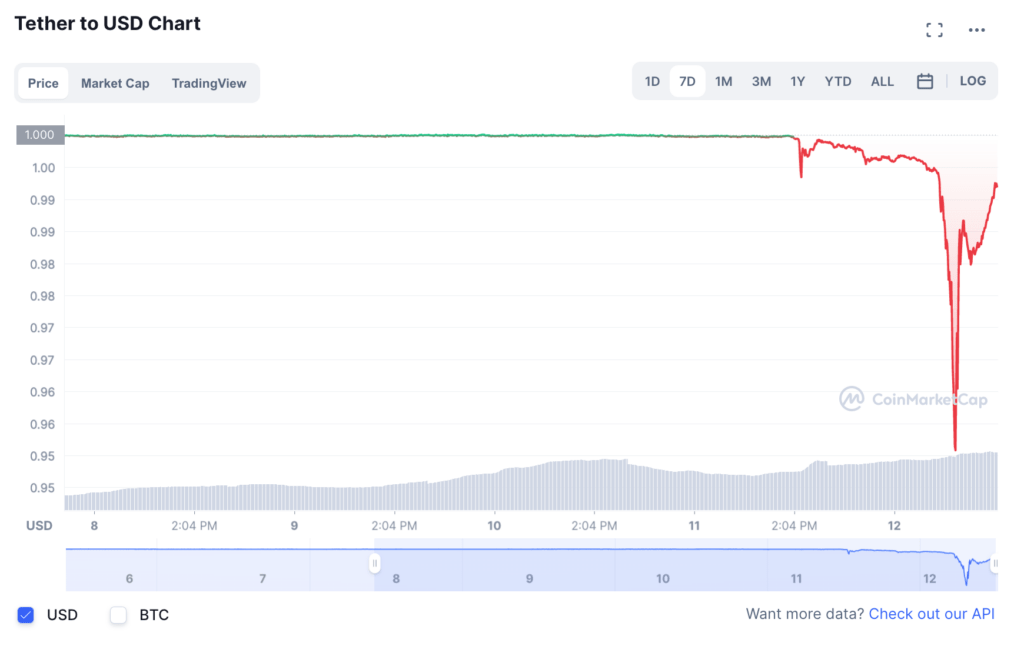The UST and Terra debacle puts all stablecoin projects into question. Will history mark the end of these stablecoins? Opinions are pessimistic.
A first stall at 0.97 dollars, then at 0.80, and finally 0.30. Within hours, the price of UST, Terra’s cryptocurrency, plummeted completely. The story might not be anything out of the ordinary: cryptos are notorious for their volatility and many projects see their value drop rapidly. But the UST has the distinction of being a stablecoin, pegged to the dollar, which would normally have made such a change in its value impossible – and it was one of the most popular projects at the time.
The fall of Terra and UST are major setbacks for the entire crypto industry, and especially for stablecoins. These cryptocurrency projects pegged to external financial assets are becoming increasingly popular. But they were already controversial, even before the Terra debacle. Can stablecoins really survive such a story?
The problems of stablecoins
It is important first of all to come back to their definition. Stablecoins are crypto-currencies whose value is indexed to financial assets, whether it is a currency, such as the dollar or the euro, or a metal, such as gold or platinum. It is these indexations that should normally allow them to keep a stable price.
Stablecoins keep this indexation through different mechanisms. For example, Tether collateralizes each crypto unit with a dollar: for each Tether created, a dollar has been deposited in a bank account managed by the project.
But not all stablecoin projects work on this basis. Thus, the UST relies on a complex algorithmic protocol and on the cryptocurrency of its blockchain, the LUNA, to guarantee its indexation. Concretely, the course of the UST is maintained thanks to a ” decentralized oracle ”, i.e. the validators of the Terra blockchain vote every 5 blocks on the “ for what they consider to be the true exchange rate “Summarizes the specialized site Cryptoast. In the event of a stall, when the value of the UST drops, an algorithm is responsible for burning USTs in order to raise their price. It is therefore a algorithmic stablecoin.

This distinction between stablecoins “ classics and algorithmic protocols is very important to do. Financial authorities don’t place much faith in projects like Tether’s: the crypto hasn’t always had as many fiat currency reserves as it claims, which has landed it some trouble in the US. But since the problems of the Terra project, it is all the algorithmic stablecoins that are closely scrutinized by the authorities. And, according to Blockwork, “ this could be the end of algorithmic stablecoins as we know them “.
The end of algorithmic stablecoins?
For the moment, “ no algorithmic stablecoin project worked Adil told BlockworkAbdulali, cryptocurrency investment specialist. ” Algorithmic incentives for indexings remain an unsolved problem », and the failure of Terra signs « the end ” of this ” innovative experience “. A study published by the journal Wake Forest Law Review goes even further: for it, algorithmic stablecoins would be “ destined to fail », and would be « in a constant state of vulnerability “.
It seems obvious that the financial regulators of many countries will want to severely regulate similar projects in the future, or even ban them completely.
But it’s not just algorithmic stablecoins that are having trouble. US Treasury Secretary Janet Yellen spoke on May 10 to express her reservations about cryptocurrencies, and stablecoins in particular. They “ could threaten financial stability “, she warned, citing in particular “ risks associated with payment systems » and « risks in the event of a high concentration of stablecoins by companies with a strong market presence “. According to her, the story of Terra and UST illustrates that stablecoins “ are products that are rapidly gaining importance, and which represent increasingly serious risks “.
Regulator concerns could adversely affect the entire stablecoin industry very quickly, and not just the algorithms. Shortly after Janet Yellen spoke, the price of Tether began to fall: it fell to $0.95, before returning to $0.99.

